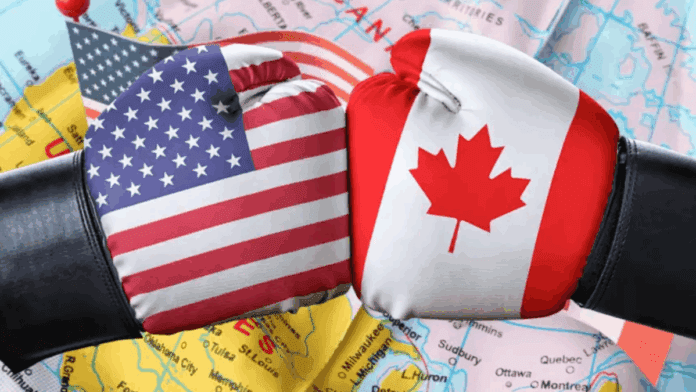President Donald Trump has announced a sharp increase in tariffs on certain goods coming into the United States from Canada. Starting August 1, the new tariff rate will jump to 35%, up from the current 25% applied to some Canadian imports that are not protected under the US-Mexico-Canada Agreement (USMCA).
This move has caused concern in Ottawa, where leaders have been working to avoid more trade penalties. Despite efforts to calm the situation, Trump’s letter accused Canada of using unfair trade policies and placing barriers that harm American businesses. He also criticized Canada’s existing tariffs on US dairy products and claimed Canada had financially retaliated against the United States.
Trump linked the decision to ongoing fentanyl concerns, saying Canada had failed to control the flow of the drug into the US. But official US data suggests that only a small amount of fentanyl comes through the Canadian border. Still, Trump stated he might consider adjusting the tariff decision if Canada cooperates more actively on the issue.
Not all goods will be affected. Key industries like the automotive sector will continue to be excluded, as both countries rely heavily on each other for car parts and manufacturing. Energy imports, such as oil and gas, will also stay at a lower 10% tariff rate.
“Witch Hunt” Warning: Trump Demands Lula End Bolsonaro Trial or Pay 50% Tariff Price
Global Trade Partners May Face 15-20% Blanket Tariffs
Trump’s actions toward Canada appear to be just the beginning. In a media interview, he revealed plans to set new global tariff levels between 15% and 20% for most US trading partners. This would be a major jump from the current global baseline of 10%, which has been in place for most countries.
Officials said the White House has begun sending formal notices to other nations. Letters to members of the European Union are expected soon. Trump said these new tariffs will go into effect by August 1, unless countries agree to negotiate more favorable trade terms with the United States.
The new trade measures would continue Trump’s long-standing push to use tariffs as a central tool in shaping economic policy. While parts of the USMCA still protect many Canadian exports, Trump is using other legal grounds—like public health and national security—to apply new fees.
Trump’s team stressed that these changes are not final and could still be adjusted. Legal orders for the tariffs are not yet signed, and revisions are possible right up to the deadline. However, they made it clear that the White House is serious about pushing forward with its tariff plans.
Canada’s leadership expressed strong opposition. Earlier in the week, Canadian officials criticized another US proposal that would place a 50% tariff on copper imports. They warned that the United States risks sparking a damaging trade dispute between two close allies.
Copper industry rocked by 50% Trump tariff—EVs, data centers brace for impact
Canada’s Trade Exemptions Narrow As Pressure Mounts
Trade talks between the two countries have already hit rough patches in recent months. In one notable case, the US walked away from discussions after Canada introduced a digital services tax. Although Canada later dropped the plan, tensions have remained high.
Most Canadian goods that are covered by USMCA will remain unaffected. But the new 35% tariff will apply to products not shielded by the trade deal, adding fresh pressure on sectors that rely on access to the US market. Some of these goods are already facing steep tariffs, including steel and aluminum, which have been taxed at 50% under Trump’s earlier orders.
The White House insists these moves are necessary to protect US industries and reduce trade deficits. Trump has used similar arguments before, targeting countries he says take advantage of the US through unbalanced trade deals or lax enforcement.
While the announcement did cause the Canadian dollar to weaken slightly, and US markets showed some signs of unease, Trump brushed off concerns. He pointed to strong US equity performance and said that higher tariffs were part of his successful economic strategy.
As August 1 approaches, officials in Washington and Ottawa are racing to navigate the latest round of trade challenges. Whether any changes or deals can be reached in time remains uncertain.
